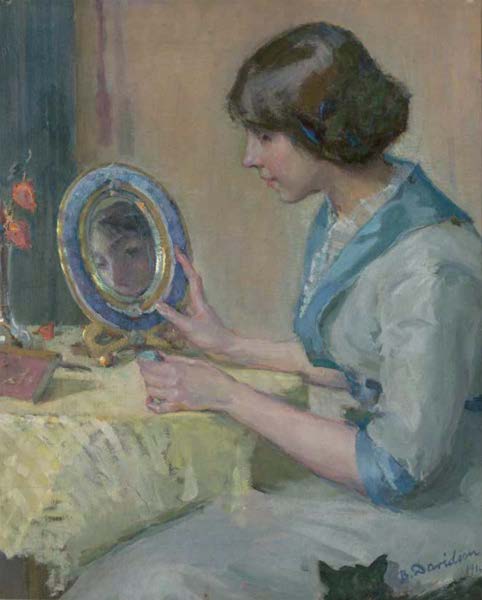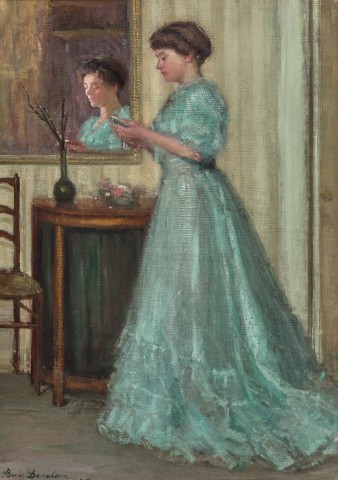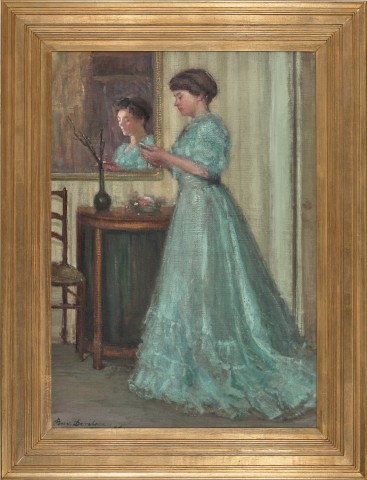LA ROBE BLEUE, 1911
BESSIE DAVIDSON
oil on canvas
92.5 x 65.0 cm
signed and dated lower left: Bessie Davidson 11
bears inscription on label verso: 191
Beaussant – Lefevre, Paris, 11 December 2009, lot 217
Private collection
Sotheby’s, London, 13 July 2010, lot 139
Private collection, New South Wales
Salon de la Société National des Beaux Arts, Grand Palais, Paris, 16 April – 30 June 1911, cat. 372 (as ‘Dame en robe bleue’)
Bessie Davidson & Sally Smart – Two artists and the Parisian avant–garde, Bendigo Art Gallery, Victoria, 20 March – 26 July 2020
‘Australasians at Paris Salons’, The Argus, Melbourne, 17 June 1911, p. 7 (as ‘Lady in the Blue Dress’)
Curtin, P., (ed.), Bessie Davidson: An Australian Impressionist in Paris, Bendigo Art Gallery, Victoria, 2020, p. 63
DH2022 ART Cat (May 2022) FA3 2.jpg
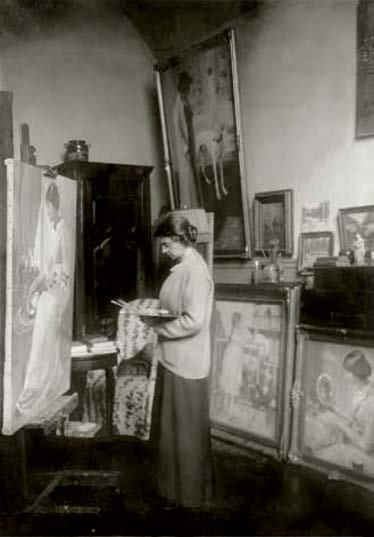
In her catalogue essay accompanying the recent, long-overdue survey of Bessie Davidson’s achievements at the Bendigo Art Gallery, curator Tansy Curtain suggested the artist’s ‘depictions of women at leisure are perhaps the most intriguing and revealing of all her works’1 – and certainly, the magnificent La Robe Bleue, 1911 featured here would seem no exception. As the Argus critic, reviewing the representation of Australian artists at the 1911 Paris Salon, enthusiastically exclaimed of the painting (albeit with a touch of gender-prejudice typical of the era): ‘The city of Adelaide has produced an artist of rare and dainty talent in Miss Bessie Davidson. Her two pictures possess a charm special to the best painting of her sex. Considered as the work of a woman too much praise cannot be given to Miss Davidson’s “Lady in the Blue Dress”. Refinement, grace of execution, and rare colour are among its qualities.’2
An important work dating from her early life in Paris, La Robe Bleue captures exquisitely Davidson’s predilection for the subject of a woman alone in a domestic space, and the variety of states – loneliness, introversion, or pleasured independence – that might imply. In the present case, the figure appears in contemplation of some treasured possession (perhaps a photograph in a frame) and the mood is contented, with her elegant costume and surrounds conveying an air of genteel and cultured respectability. As with her depictions of women at leisure elsewhere, the figure is passive and does not meet our gaze; rather the viewer sneaks a furtive glimpse of her in a private moment of reflection or nostalgia.
With its delicate pastel palette, mastery of tonalism and pensive subject, the composition unmistakably betrays the influence of American-born, British-based post-impressionist painter, James Abbott McNeill Whistler (1834 – 1903) in masterpieces such as his Symphony in White, No. 2: The Little White Girl, 1864 (Tate Gallery, London) and Symphony in Flesh Colour and Pink: Portrait of Mrs Frances Leyland, 1871 – 74 (The Frick Collection, New York). Also discernible are striking affinities with the oeuvre of prominent American artist, Richard Miller (1875 – 1943) who was working and teaching in Paris at the same time as Davidson, and with whom she took classes at the Académie Colarossi. Described by fellow Australian female expatriate, Hilda Rix Nicholas, as causing ‘a stir in Paris’3, Miller was renowned for his distinctive, highly decorative brand of impression, famously declaring in 1912 that that ‘Art’s mission is not literary, the telling of a story, but decorative, the conveying of a pleasant optical sensation.’4 Invariably depicting stylish Parisian women at leisure in luxurious, domestic settings or sunny, brilliantly-lit gardens, he frequently used his wife as a model and, given her profile resemblance to the figure in La Robe Bleue, it may well be that she is featured here.
1. Curtin, T., ‘Bessie Davidson: Painter of domestic avant-garde’ in Bessie Davidson: An Australian Impressionist in Paris, Bendigo Art Gallery, Victoria, 2020, p. 13
2. ‘Australasians at Paris Salons’, The Argus, 17 June 1911 p. 7 (as ‘Lady in the Blue Dress’)
3. Hilda Rix Nicholas, ‘In search of beauty’, 14 May 1908, in ‘Annotated scrapbook’, Hilda Rix Nicholas Papers, National Library of Australia, Canberra.
4. Richard Miller, quoted at https://www.nadatabase.org/2018/07/17/richard-edward-miller/
VERONICA ANGELATOS
image004 (6).jpg
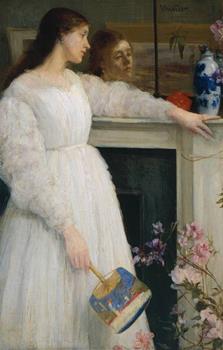
DH2022 ART Cat (May 2022) FA3 3.jpg
